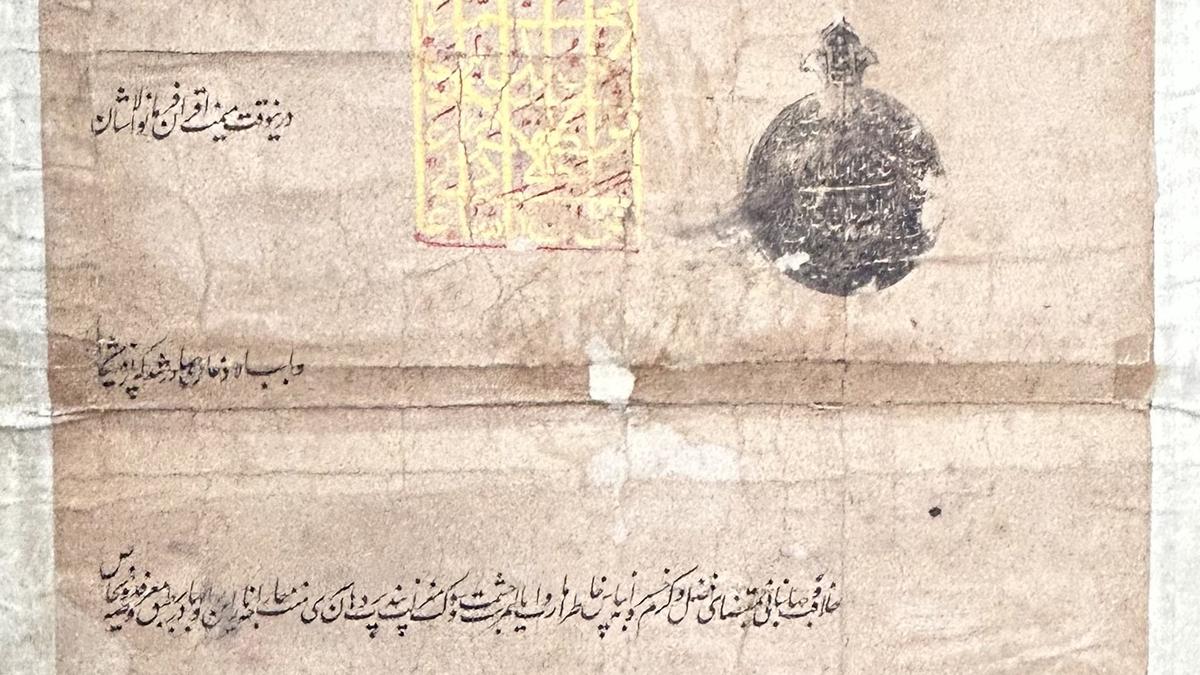
Over 250-years-old Mughal document throws light on tax waiver for pilgrims at Allahabad
The Hindu
Discover a 250-year-old firman from Mughal Emperor Shah Alam II granting religious autonomy to Ganga pilgrims.
India was undergoing a transformation. The Mughal Empire was in the decline, and the East India Company was spreading it tentacles of influence across the subcontinent. Against this backdrop, a document from the era, now preserved at the Telangana State Archives and Research Institute (TSARI), sheds light on how religious autonomy was accorded to pilgrims arriving from various parts of the country to take a dip in the river Ganga.
The document is firman, a royal decree, issued by Mughal Emperor Shah Alam II, Abul Muzaffar Jalaluddin Muhammad.
Measuring 102 cm in length and 46 cm in width, the firman instructs officials posted in the subah (province) of Allahabad that no pilgrim should be charged any fees. Further, it mandates that the government bear all expenses.
“The firman, is dated 1773, and is written in shikasta script, often described as ‘broken script’. It directs the mutaqaddiyan, who werepublic officers or clerks, and other senior officials monitoring movements along the river not to charge pilgrims who come for the holy dip or bath,” Director of TSARI Zareena Parveen said.
Translating the document for The Hindu, she explained: “Levies and taxes were to be waived. Taking the holy dip was regarded as a religious ritual, and thus, should not be disrupted. Even the kotwali, meaning police, were issued similar instructions. Any contravention of the firman was to be dealt with sternly.”
The firman also offers insight into the communities that travelled to the Allahabad subah in large numbers for the ritual bath. Among them were ‘Gujaratis’ and ‘Marathas’, as specifically mentioned in the decree.
Annabelle Teh Gallop in The Genealogical Seal of the Mughal Emperors of India points out: “The distinctive design of the seal — a central circle containing the name of the ruling emperor, surrounded by a series of smaller circles, like satellites in orbit, containing names of his ancestors up to Timur each preceded by the filiative ibn — was self evident masterpiece of imperial symbolism in which the authority of the ruling emperor was both legitimised and enhanced by the deliberate referece to his illustrious ancestors.” The seal, she said, found fame beyond the boundaries of the Mughal empire.

 Run 3 Space | Play Space Running Game
Run 3 Space | Play Space Running Game Traffic Jam 3D | Online Racing Game
Traffic Jam 3D | Online Racing Game Duck Hunt | Play Old Classic Game
Duck Hunt | Play Old Classic Game











